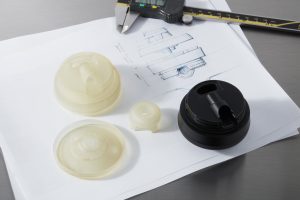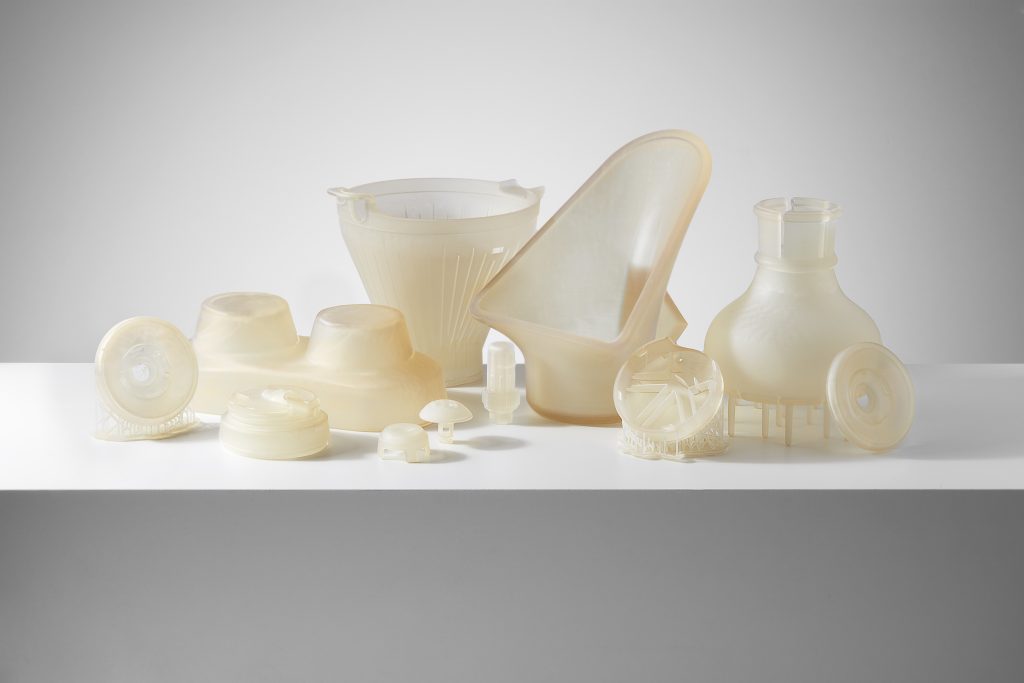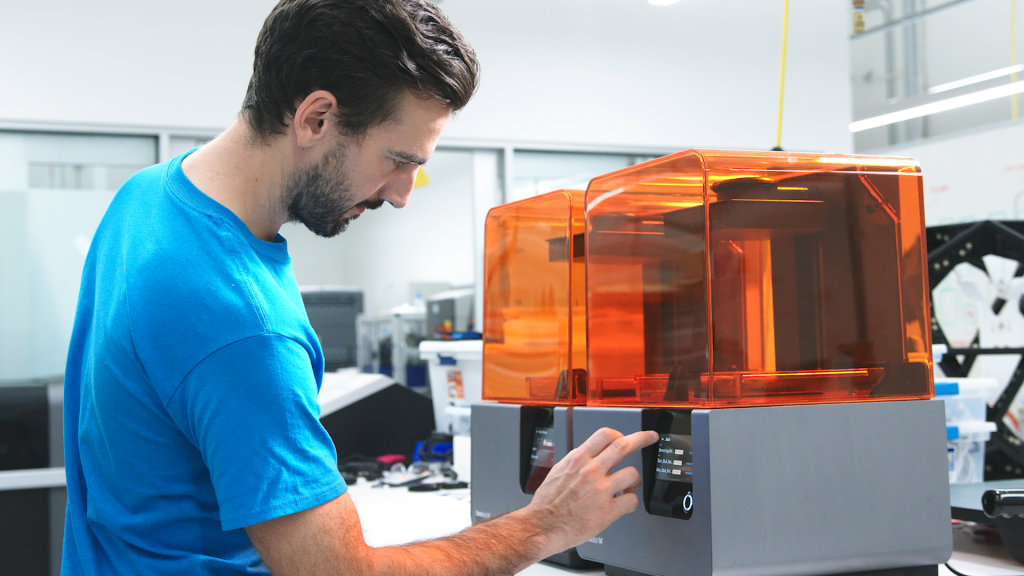Formlabs has announced that it has reformulated its High Temp Resin, which is part of its collection of Engineering Resins for the Form 2 3D printer. The material offers the highest heat deflection temperature (HDT) of any Formlabs resin and is well-suited for 3D printing detailed, precise parts with high thermal stability. The new and improved formulation has an HDT of 238ºC @ 0.45 MPa and better elongation to decrease brittleness.
 Many prototyping materials deform at higher temperatures, so it can be a challenge to prototype items that come into contact with high heat. High Temp Resin is designed specifically for those applications, which can include kitchen appliances, millifluidic devices, and encapsulation of cosmetics.
Many prototyping materials deform at higher temperatures, so it can be a challenge to prototype items that come into contact with high heat. High Temp Resin is designed specifically for those applications, which can include kitchen appliances, millifluidic devices, and encapsulation of cosmetics.
Kitchen goods manufacturer OXO used High Temp Resin with the Form 2 to prototype functional parts that needed to come into contact with boiling water for their Barista Brain 9 Cup Coffee Maker.
“We use high temperature SLA printing to make prototype internal parts for coffee makers,” said Mack Mor, Senior Product Engineer at OXO. “Since near-boiling water passes through the parts, traditional SLA resins deform, but high temperature resins stay rigid.”
In automotive and aerospace applications, High Temp Resin can be used in testing to prototype under-the-hood components, mount cameras inside industrial equipment, and mount sensors for wind tunnel testing. The Advanced Manufacturing Research Center (AMRC) at the University of Sheffield uses High Temp Resin to quickly test washers and brackets for different sensor configurations that can withstand the high temperatures of welding.
“If we’re getting these brackets manufactured or fabricated, we would have to go through a very arduous design process to make sure that the things we were manufacturing would actually be fit for purpose, whereas this lets us kind of go by a bit of trial and error and lets us test a lot more rigorously before we’ve settled on a final design,” said Matthew Smarts, Technical Lead, Machining Group for Nuclear NIC at AMRC.
High Temp Resin, in addition to prototyping and testing, can be used in production processes. A few examples of production applications include:
- Carbon fiber parts for aerospace and automotive applications
- Vulcanized rubber molds for jewelry production
- Injection mold inserts and test molds
- Protective masks for soldering or coating electronics
Google’s in-house technology incubator, the Advanced Technology and Projects (ATAP) group, used High Temp Resin to produce hundreds of dummy PCBs in the overmolding process for a new kind of wearable. You can learn more about the process in the video below:
“The fact that we were able to shut the tool off on 3D printed material, hit it with that high-pressure injection, and not even have it flash, that’s a bit unique,” said David Beardsley, Model Shop Manager at Google ATAP. “Had we not had the Form 2 [and High Temp Resin], we would not have been able to pull this off. When we did move to a full product cycle, we were sure that was going to work.”
With the Form 2 and High Temp Resin, the ATAP team was able to 3D print surrogate inserts that withstood overmolding with TPSiV injected at over 250 °C and 27,000 psi. The company saved about $100,000 in wasted electronic sub-assemblies, and even more when accounting for labor costs. They also avoided a complex supply chain and shortened the pre-production validation test cycle for the printed circuit board assembly (PCBA) inserts from three weeks to three days.
Discuss this and other 3D printing topics at 3DPrintBoard.com or share your thoughts below.
Subscribe to Our Email Newsletter
Stay up-to-date on all the latest news from the 3D printing industry and receive information and offers from third party vendors.
You May Also Like
3D Printing Unpeeled: New Arkema Material for HP, Saddle and Macro MEMS
A new Arkema material for MJF is said to reduce costs per part by up to 25% and have an 85% reusability ratio. HP 3D HR PA 12 S has been...
3D Printing News Briefs, January 20, 2024: FDM, LPBF, Underwater 3D Printer, Racing, & More
We’re starting off with a process certification in today’s 3D Printing News Briefs, and then moving on to research about solute trapping, laser powder bed fusion, and then moving on...
3D Printing Webinar and Event Roundup: December 3, 2023
We’ve got plenty of events and webinars coming up for you this week! Quickparts is having a Manufacturing Roadshow, America Makes is holding a Member Town Hall, Stratafest makes two...
Intuitive Machines Debuts $40M Hub for Lunar Ambitions and 3D Printing Tech
Best known for its pioneering work in lunar exploration and its development of the Nova-C lunar lander, Intuitive Machines (Nasdaq: LUNR) has marked yet another significant milestone. The leading space...

































